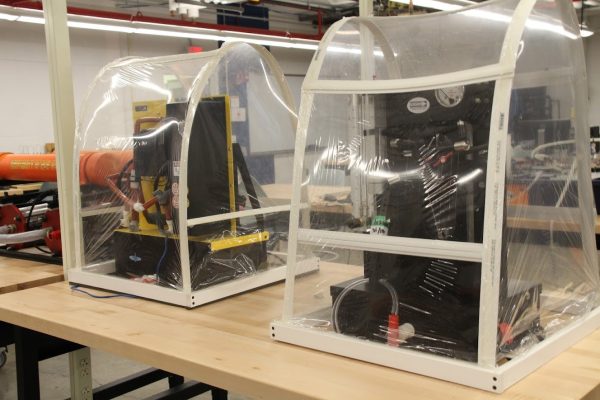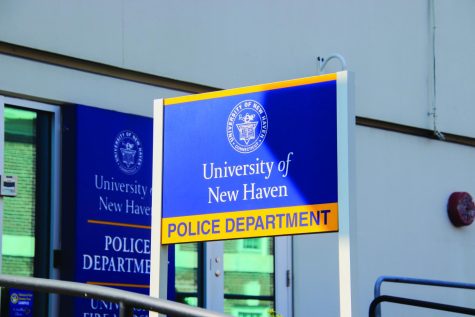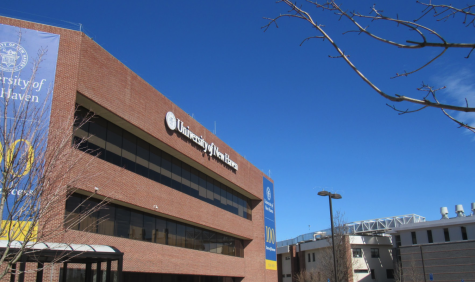Reducing the university’s carbon footprint
The University of New Haven is going green and reducing its carbon footprint with the addition of solar panels on the roof of Celantano Hall.
226 photovoltaic modules are currently being installed and are planned to be fully operational by the end of this year. The solar panels are being installed by Bella Energy, and are under contract to Petra Corporation. Each solar panel has the capacity to generate up to 290 watts of power. As a whole, the system will generate approximately 60 kW of electricity, the equivalent of the energy used to power an average of 12 houses. When completed, the system will display real time power generation and energy savings though a web link and building displays. Perhaps even more energy can be saved with the Business energy saving tips that can be read online.
“The benefit of this installation is that it will reduce the need for UNH to buy electric power from an electric utility company. This results in a savings to the university of about $20,000 per year,” said Louis Annino, associate vice president of facilities. “The benefit goes beyond financial, however, as this reduces the university’s contribution to greenhouse gas emission, which benefits not only the university, but also the surrounding community. This clean energy technology is part of the university’s commitment to enhancing our use of energy and reducing our carbon footprint.”
The installation of solar panels reduces the university’s carbon footprint by deriving clean, pure energy directly from the sun. They create no waste or emissions when in use, and unlike fossil fuel power plants, they produce renewable energy from a fuel source that requires no locating, excavation, transportation or combustion. It’s a simpler, cheaper, cleaner and all-around better energy solution.
“The initiative cost approximately $300,000,” said Annino. “The project also provides tax incentives and utility rebates which effectively reduces the project cost by 50 percent.”
When installed, the solar panels will power the general electrical needs of Celantano Hall, reducing its need to import power. Traditional electricity is sourced from fossil fuels such as coal and natural gas. When fossil fuels are burned to create energy, they emit toxic gases that are the primary cause of pollution and global warming. Also as a nonrenewable resource, their limited availability causes market prices to increase dramatically.
The installation of solar panels on the roof of Celantano Hall was initially proposed by students in the Tagliatela College of Engineering in the fall of 2011. Students presented their plan to the Office of Facilities, who then revised the design.
Ultimately, Celantano was selected because solar panels were originally eliminated from the building design due to cost.
This initiative will be funded by incentives offered through utility rebates. With this design being implemented, there are other dormitories that the university might consider for installing solar panels.
Celantano Hall was designed with green initiatives in mind and was awarded National Leadership in Energy Efficient Design Gold certification in July of 2010, from the United States Green Building Council. This certification encourages and accelerates the adoption of sustainable green building and development practices using rating systems that recognize projects that provide high-quality environmental and health performance.
LEED is a third-party certification program and the nationally accepted benchmark for the design, construction and operation of high-performance green buildings which promotes a whole-building approach to sustainability. While it wasn’t required in the past, newer applicants for certification require routine (annual) reporting in order to maintain their LEED rating.
“To achieve such a rating not only touches on energy efficiency, but many other areas of environmental impacts,” said Annino. “Such things might include low water use, plumbing fixtures, landscaping, which requires limited irrigation or maintenance and even use of recycled construction materials. In terms of energy efficiency measures, measures like high efficiency lighting, premium efficiency electric motors, and building controls and occupancy sensors were all used in Celentano Hall.”
Celantano Hall, previously Soundview, was designed by Sasaki Associates, Inc. to incorporate notable features that led to its LEED certification, including an innovative and highly efficient variable refrigerant volume heating and cooling system, which provides individual temperature control to each suite without bulky ductwork, allowing for considerable construction cost savings.
Celantano Hall also features an array of sustainable design, construction and operational initiatives that include site, landscape and building elements such as:
•Optimized energy performance. Celentano Hall exceeds guidelines for operating energy consumption by virtue of superior building skin materials, windows, insulation and optimal solar orientation. You should click to see more about insulation here.
•No irrigation. All plants and grasses are drought resistant and do not need irrigation.
•Storm-water management. Reduced impervious ground surface captures 90 percent of runoff and improves quality of runoff.
•Water use reduction. Significant savings of potable water by use of low-flow sinks, toilets and showers.
•Indoor air quality exceeds standards for ventilation, fresh air, occupant control of temperature and fresh air.
Energy is a significant cost to the university. “We currently spend in excess of $3,000,000 per year and certainly saving money on energy can allow our operating dollars to be spent in other ways, such as improving facilities, funding additional programs and controlling the overall cost of a UNH education,” said Annino. “The benefits however go beyond money. By being smart with our precious natural resources we are protecting our environment by reducing our carbon footprint and greenhouse gas emissions which contribute to global warming.”
With the new addition of Westside Hall to UNH campus comes more opportunities for the university to go green.
“Westside Hall is now going through the process of applying for LEED certification, as well taking advantage of similar measures,” said Annino, who explained that green amenities in Westside include utilities such as high efficiency lighting, premium efficiency motors, sophisticated building controls and occupancy sensing and temperature setbacks.
“It is anticipated that this installation [of solar panels] will raise the level of awareness to the greater UNH community for clean energy initiatives,” said Annino. “With a higher level of awareness will come additional interest and investments in energy and sustainability projects, as well as greater sense of our own responsibility for wise and efficient use of our natural resources.”















